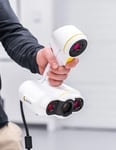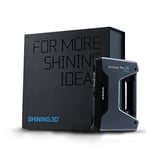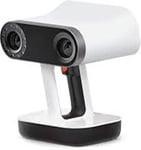One of the primary factors that have historically prevented 3D scanners from having a stronger presence on the high-tech market is the extravagant price point. In the recent past, most professional-grade systems would cost a pretty penny, from upwards of $10,000. Thus, 3D scanning technology was primarily reserved for niche applications like industrial engineering, higher education, art and heritage projects, and so on.
But as of late, more affordable options are entering the fray, providing both consumers and prosumers with a practical pathway into the world of 3D scanning technology. The Candian 3D scanning company Peel 3D is helping to lead this frugal fight with an inexpensive and accessible handheld 3D scanner of its own. The device is powered by 3D scanning expertise of Creaform, a unit of AMETEK, and is intended to offer professional-grade scanning quality at an entry-level price.
As you can probably infer from the name of the device, ‘peel’ came to the team while they were at the breakfast table eating bananas. “The peel is what you end up with if you scan a banana: it’s a hollow shell that has the exact shape of the object you are interested in,” the company explains on its website.
Listed at $5,900, the Peel 1 is a reasonably priced 3D scanner that is surprisingly capable of capturing high-quality 3D models, making it the perfect entry-level tool for projects that must comply with a strict budget. It’s cheap, compact, and seems to be quite functional, but does the Peel 1 3D scanner match up to pricier 3D scanning systems like the Artec Eva and EinScan Pro 2x?
Let’s review the features and specs to peel away an answer from this pertinent question.
Features

If you’re unfamiliar with the 3D scanning market, $5,900 might sound expensive for a handheld device. However, when you consider that other competing 3D scanners can cost anywhere from $10,000 to $20,000, the Peel 1 3D scanner suddenly becomes a bargain for entry-level professionals on a budget.
Despite the low price, the Peel 1 3D scanner still offers some fascinating features that are absent from other devices in the same price range, such as the ability to accurately scan flat or shiny surfaces. The system utilizes stick-on targets to properly capture flat and smooth surfaces. For typical 3D scanning applications, the process is as easy as pointing the scanner at an object and shooting – little to no preparation necessary.
Using an LED system to generate the structured light, the Peel 1 3D scanner is safer to use than other laser-based systems. When employing the stick-on guides, the Peel 1 is able to reach a scanning accuracy of 0.250mm and volumetric accuracy of 0.500mm volumetric accuracy. Although the base resolution is a mere 0.500mm, which is lackluster compared to other models, it’s a sacrifice that must be made for the sake of cost-effectiveness.
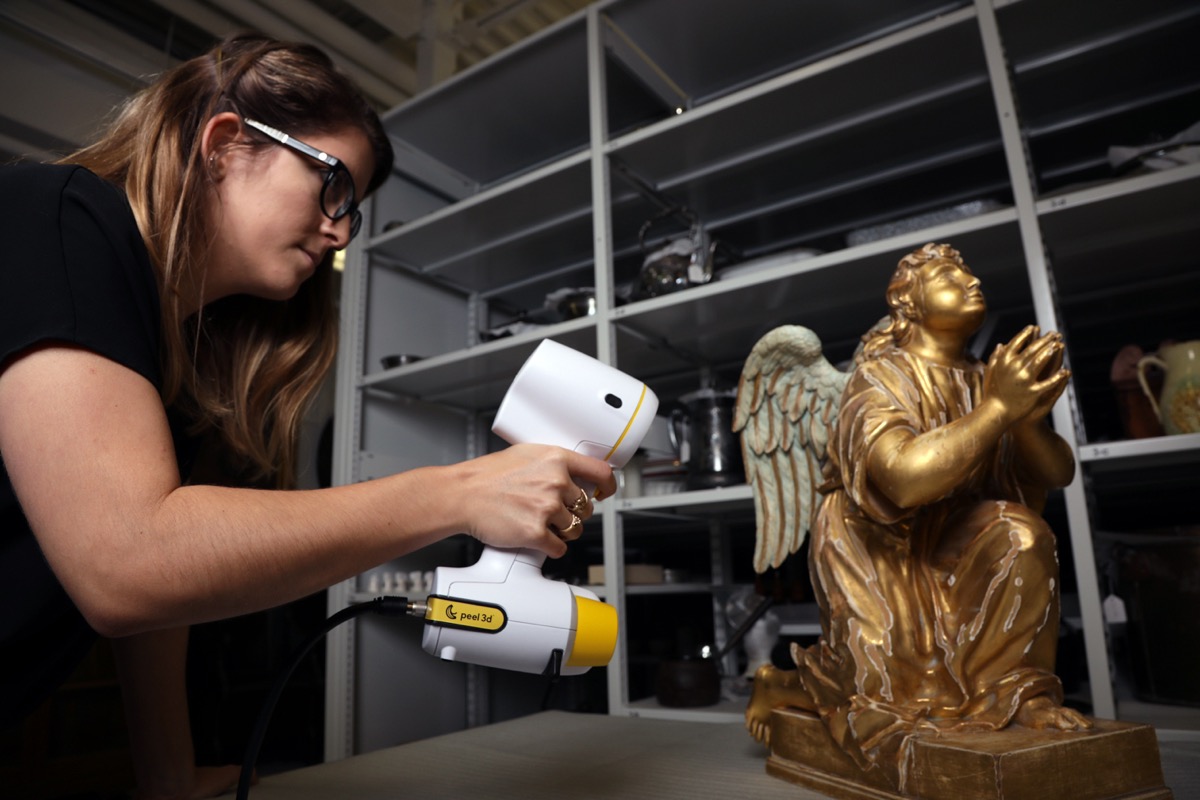
The scanning volume of the Peel 1 is around a 3m cube, making it more than capable of capturing a wide variety of objects both large and small. For objects that exceed that limit, you can also conduct multiple scans and paste them together after the fact.
Aside from the quirky banana-like yellow and white color scheme of the 3D scanner, the overall design presents an impressive balance of simplicity and efficiency. With a unique shape an 850g weight, the Peel 1 3D scanner fits comfortably into the user’s hand. To operate the Peel 1 3D scanner, you’ll need to connect it to a laptop or desktop computer via USB.
As we mentioned in the introduction, this 3D scanner is powered by technology from the Quebec-based company Creaform, a well-respected entity in the 3D scanning industry. So, even though Peel 3D isn’t exactly a household name, the technology inside of this scanner comes from a trusted source.
In a demonstration video (shared below) that was released alongside the 3D scanner in 2017, the Peel 3D team attempted to scan a reflective racing seat to prove that their scanner could capture shiny objects. While most 3D scanners struggle with such objects, the Peel 1 3D scanner looked surprisingly adept at scanning the seat.
While we haven’t tested the Peel 1 3D scanner ourselves, we remain impressed by the initial results that the manufacturer was able to achieve. However, like other 3D scanning systems, this low-cost device does struggle with a few attributes. But the company shares a few tips and tricks to optimize the scanning process for these difficult-to-capture features.
For objects that are translucent, deep black, or have a mirrored finish, users can apply some spray powder to help make the surfaces more compatible with the scanner. Still, like other scanners, the Peel 1 falls short when it comes to capturing highly intricate objects, as well as hair and fur.
The Peel 3D software that comes with the 3D scanner offers a range of useful tools that simplify the 3D scanning process and enhance the results. For starters, the software has a start and stop system that allows users to pause the 3D scanning process and change settings, or even take a break when scanning a large object.
You can also use the software to correct or delete distorted frames, automatically clean the 3D mesh, and fill any holes to ensure that the 3D model is watertight. After processing is finished, the Peel 3D software allows you to instantly export the 3D model in a wide range of file formats, including STL, OBJ, PLY, WRL, DAE, FBX, X3D, MA, and ZPR.

All of these features sound terrific considering the sub-$6,000 price tag, but is it worth buying the Peel 1 3D scanner over other options? From what we’ve gathered, the Peel 1 is ideal for entry-level professionals who want a quality 3D scanner at a low price.
For applications like reverse engineering and design, science and education, art, heritage preservation, and human body scanning, the Peel 1 3D scanner should do the trick just fine. But, if you have a budget that allows you to dip into more expensive 3D scanning systems in the $10,000 to $20,000 range, you will be able to find devices that offer a better all-around experience, from scanning quality to speed.
Tech Specs
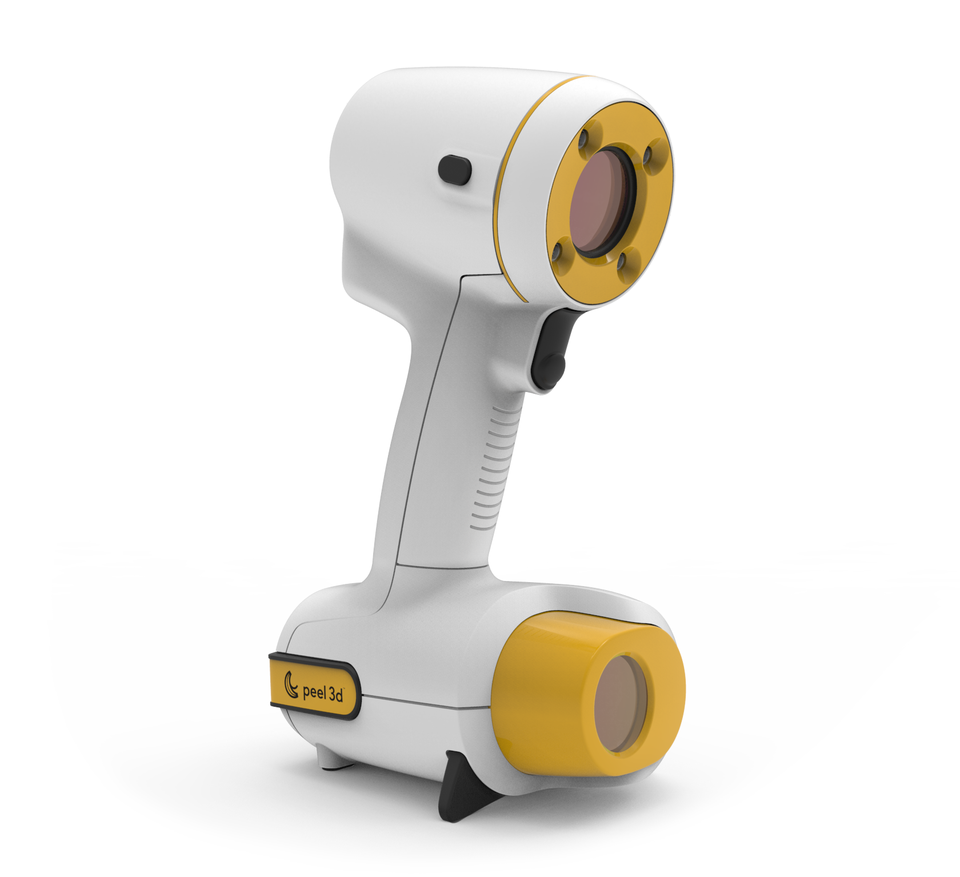
Want to peel away at the verbose feature descriptions and get the cold hard specs? Here are the technical specifications for the Peel 1 3D scanner:
- Scanning Accuracy: Up to 0.250 mm (0.01 in.)
- Volumetric Accuracy: 0.500 mm/m (0.006 in./ft)
- Resolution: 0.500 mm (0.020 in.)
- Measurement rate: 550,000 measurements/s
- Light source: White light (LED)
- Positioning methods: Geometry and/or targets
- Scanning area: 380 x 380 mm (15 in. x 15 in.)
- Stand-off distance: 400 mm (15.75 in.)
- Depth of field: 250 mm (10 in.)
- Part size range (recommended): 0.3 – 3.0 m (1 – 10 ft)
- Software: Peel 3D
- Output formats: .dae, .fbx, .ma, .obj, .ply, .stl, .txt, .wrl, .x3D, .x3Dz, .zpr
- Weight: 850 g (1.9 lbs.)
- Dimensions: 96 x 140 x 258 mm
- Connection standard: 1 x USB 2.0, USB 3.0 compatible
- Operating temperature range: 5-40 °C (41-104 °F)
- Operating humidity range (non-condensing): 10-90%
Where to Buy
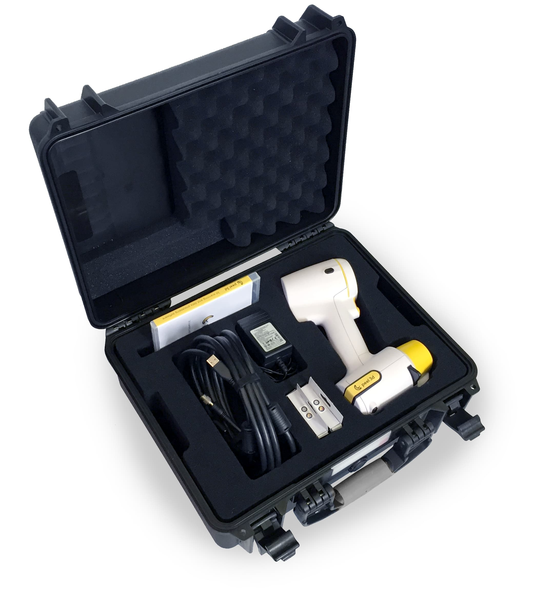
You can purchase the Peel 1 3D scanner from the online stores listed below.
Alternate Scanners
You may also be interested in the following 3D scanners:
Peel3D Peel 2
If the Peel 1 is a little too long-in-the-tooth for you, the Peel 2 may offer everything you need at a similar price point. This scanner is essentially Creaform’s old Go!Scan 50 and, priced at $7,490, it aims to hit that sweet spot of professional users along with hobbyists and creatives.
Shining 3D Einscan Pro 2X Plus
Few scanners on the market are as versatile as the Einscan Pro 2X Plus, which has a modular design so you can buy the tools you need, and not worry about paying more for features you won’t use. This makes the scanner a great option if value is your most important buying consideration.
Artec Eva
If you’re looking for something a little more professional and established, with powerful software and a relatively accessible price point to boot, the Artec Eva may fit the bill. Though it came out in 2012, the Eva has stood the test of time, thanks mostly to the powerful Artec Studio software, which is constantly improving to give you full control over your data. However, keep in mind that due to its age, the Eva is a little clunky.
Artec Eva Lite
If you don’t need texture scanning capabilities, the Eva Lite is an excellent (and cost-conscious) alternative. It costs €7,000 (~$7,630 USD) less than the full-fledged Eva and at $9,800, it’s significantly cheaper, but with the same high-quality geometry capturing abilities. Plus, if you ever change your mind and decide you do want texture scanning, it’s an easy fix – just pay the difference between the Eva and Eva Lite and Artec will unblock the texture scanning capabilities.
Artec Leo
In terms of specs, the Artec Leo is very similar to the Eva, with one big difference: it offers complete wireless functionality and onboard processing, effectively removing a laptop or computer from the equation. This gives you complete scanning freedom with no wires tethering you to a workstation. The Leo also improves upon its predecessor with such features as 2.3 mp HDR color textures, constructing models at 80 frames per second with a data acquisition speed of 4-million points per second and a 173,000 cm-cubed capture zone.
Creaform Go!Scan Spark
The Creaform Go!Scan Spark is designed for all kinds of tasks, from reverse engineering, prototyping, and VR to quality control, maintenance, digital archiving, and inspection. At just shy of 35,000€ (~ $37,960 USD), the Spark isn’t cheap, but if you’re looking for a scanner that you can rely on for professional and industrial use, it’s certainly worth considering.
License: The text of "Peel 1 3D Scanner: Review the Specs" by All3DP is licensed under a Creative Commons Attribution 4.0 International License.
CERTAIN CONTENT THAT APPEARS ON THIS SITE COMES FROM AMAZON. THIS CONTENT IS PROVIDED ‘AS IS’ AND IS SUBJECT TO CHANGE OR REMOVAL AT ANY TIME.


